Ultimate Guide to Exercises for Lumbar Herniated Disc Relief 2
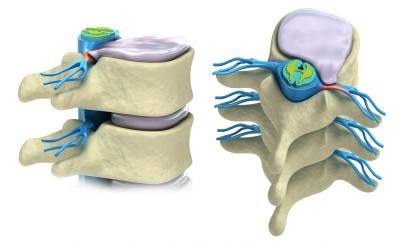
Did you find our previous article, “Disc Herniation Part 1,” helpful but are still battling discomfort? Are you eager to discover exercises that can effectively reposition your herniated disc and enhance your well-being? You’re in the right place.
In this comprehensive guide, we’ll cover:
- Effective Exercises for Repositioning a Herniated Disc: Learn the top movements to gently coax your disc back into alignment, reducing pain and improving mobility.
- Stabilization Techniques to Prevent Disc Displacement: Discover exercises that strengthen your core and back, ensuring your discs stay in place.
Understanding Lumbar Disc Herniation:
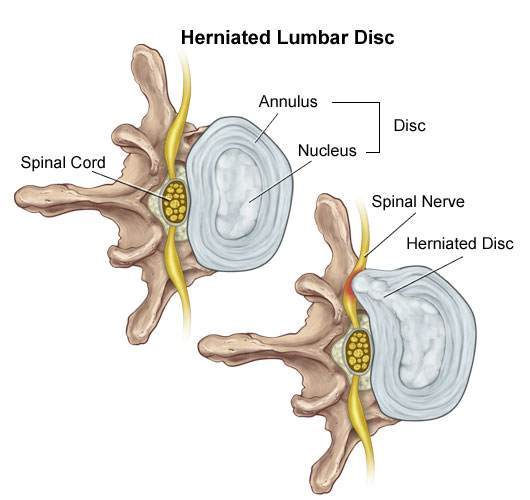
A herniated disc occurs when the disc’s nucleus breaks through the annulus, as shown in the illustration from neurosciences.beaumont.edu. But what triggers this displacement? The primary culprit is forward bending, which compresses the disc (think of it as a jelly-filled doughnut) and can lead to the annulus fracturing, allowing the nucleus to protrude and press against nerves.
Why Does it Hurt?
The disc’s exterior is tough cartilage, while its interior is softer, akin to mucus. Applying pressure on one side forces the inner material to the opposite side, similar to squeezing a doughnut. When a herniated disc or inflammation puts pressure on a nerve, pain ensues. The key to relief is applying counterpressure to reposition the disc.
For a deeper dive into herniated discs, refer to “Disc Herniation Part 1: Best Self-Treatments for Lumbar Disc Herniation.“
How to Apply Counterpressure:
The strategy involves bending your spine backwards or into the extension to shift the disc away from the nerve.
Exercises to Reposition a Herniated Disc: Note of Caution:
Initially, these exercises might intensify your pain slightly. If pain significantly worsens or radiates further down your leg during these exercises, cease immediately and consult a professional.
Exercises for Lumbar Herniated Disc
#1 Prone Lying Lumbar Herniated Disc
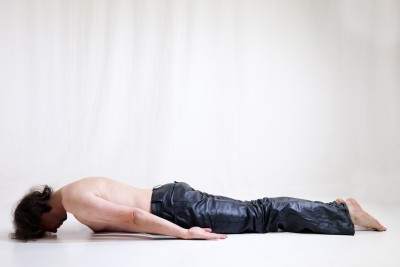
- Lie face down or prone in bed with your elbows tucked in under your side:
- As soon as you get up in the morning you should lie prone (face down). By getting in this position, your lower back becomes more arched, or as doctors say, you increase your lordosis.
- The increased lordosis pushes on the back of the disc helping to bring the nucleus forward into the correct position.
#2 Sphinx pose in Yoga For Lumbar Herniated Disc
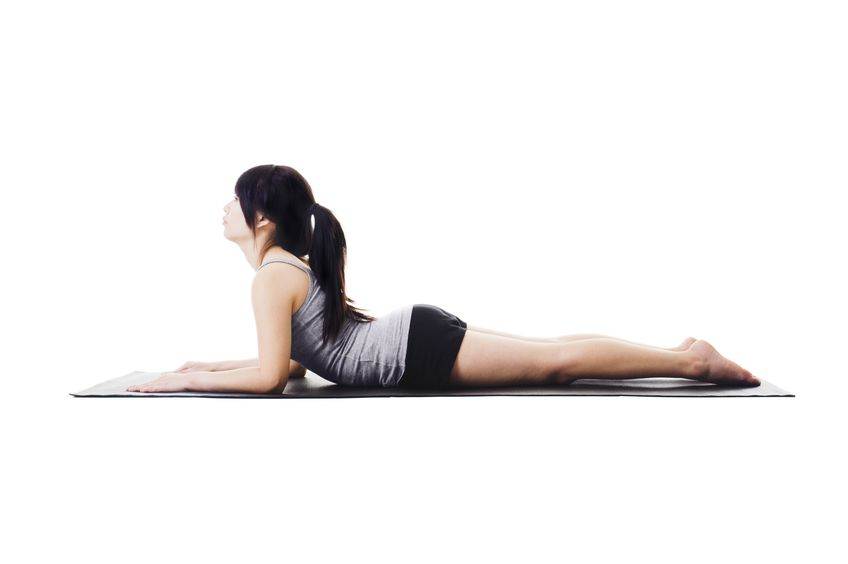
- Get into the prone position lying down on your stomach.
- Next, get on your elbows. If you have a hard time with this position go back into the prone lying position.
- Do these exercises hold each time for 1-2 seconds 6-8 times per set? This exercise can be repeated every two hours throughout the day.
Asses yourself. If the pain has decreased or the pain has moved away from the leg or thigh and into the hip or buttock, this is an improvement. Even if the pain is increased in the back but relieved in the leg this is an improvement and a green light that you should continue this exercise. You also get a green light if there is no difference at all.
- If your self-assessment gives you the green light, move on to the Cobra exercises just below.
- If your thigh or leg pain is worse, then stop right away.
- If your lower back, thighs and legs are the same you get a green light, so move on to the Cobra exercises.
#3 Cobras For Lumbar Herniated Disc
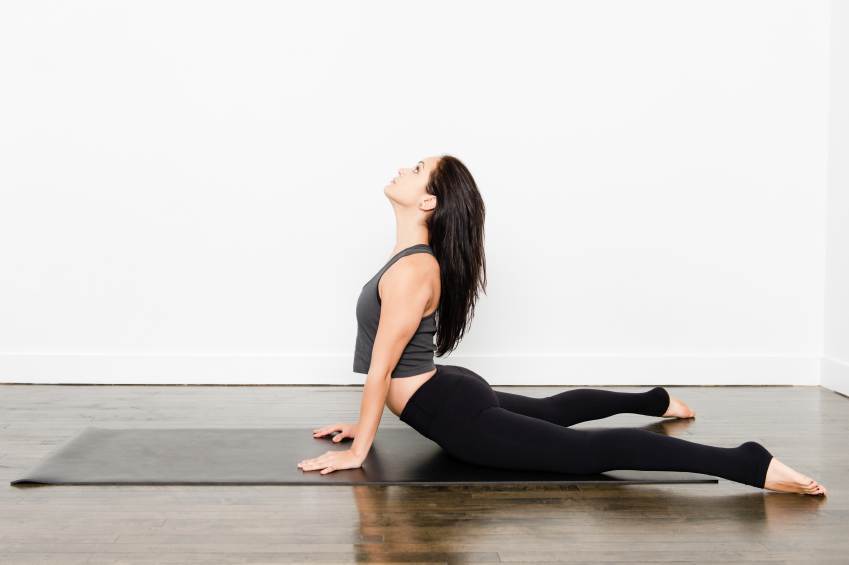
- Lie down face down with your hands underneath your shoulders.
- Push up from as high as you can until your lower back stops you or your elbows are straight.
- The pelvis should still be on the floor and the lower back muscles relaxed.
- Do these exercises hold each time for 1-2 seconds 6-8 times per set? This exercise can be repeated every two hours throughout the day.
Asses yourself. If the pain has decreased or the pain has moved away from the leg or thigh and into the hip or buttock, this is an improvement. Even if the pain is increased in the back but relieved in the leg this is an improvement and a green light that you should continue this exercise. If your thigh or leg pain is worse, then stop right away.
#4 Standing Extensions Lumbar Herniated Disc
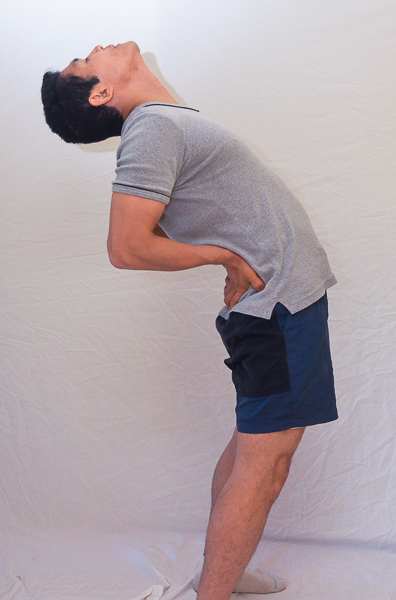
- Stand straight and put your hands behind your hips with your fingers facing down.
- Push your hands into your pelvis so that your lower back arches.
- Don’t use your lower back muscles
- These exercises can be done 6-8 times for 1-2 seconds. This exercise can be repeated every two hours throughout the day.
Stabilization Exercises: Prevent Your Disc From Coming Out By Having A Stable Spine.
#1 Cat-Camel or Cat-Camel For Herniated Disc
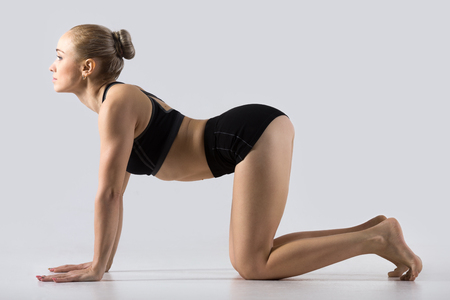
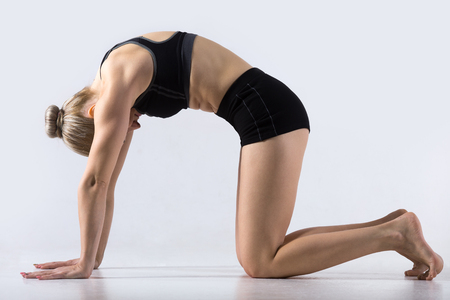
- On all fours with your knees under your hips and hands under your shoulders.
- Inhale and let your belly fall downwards toward the floor as you look up toward the ceiling for 2 seconds.
- Exhale and arch your back up as far as it will go or until you feel pain. You should not feel pain with this exercise, otherwise you are going too high.
- At the same time bend your neck forward and look toward your navel.
#2 Curl-Ups
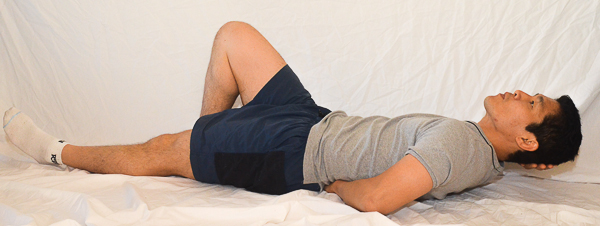
- To start, one foot is bent and the other is straight.
- One forearm goes under the arch of your lower back to support it.
- The other arm is supporting your head.
- Your head and neck come up as one block until your shoulder blades clear the floor.
- Do three sets of 5 working your way up to 10. If it’s easy, then hold for a couple of breaths.
#3 Squats
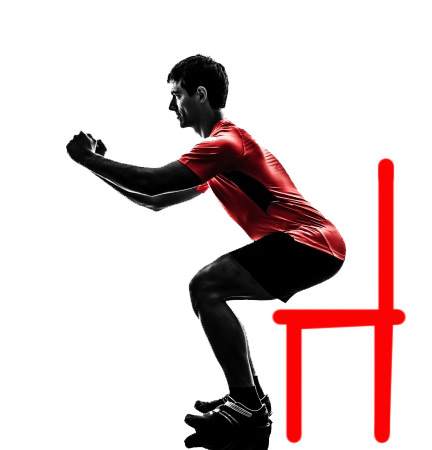
- Stand in front of a chair as if you are going to sit on it.
- Stand with your feet facing slightly more outward than your knee.
- Make sure your butt comes out, and keep lowering your butt until you touch the chair.
- Practice 3 sets of 10.
#4 Bird Dog
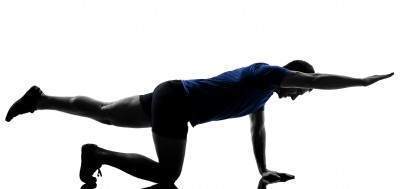
- Get into a crawling position with your hands and feet shoulder-width apart.
- Harden your core by contracting your abs and lower back. This is called bracing.
- Lift your arm first. If this is easy, then lift your leg only. If that is easy, then lift the opposite legs and arms, for example, right leg, and left arm.
- Want to make it tougher? Try lifting an arm and leg on the same side.
- 3 sets of 10. If you are shaking a little or cannot balance quite right, you’re doing the right exercise for you, i.e. lifting just the leg or arm might be easy, but lifting opposite arms and legs might put you off-balance a bit. Make sure you are stable before going to the advanced bird dog.
Tell us what you think in the comments below and like us on Facebook. This Toronto Downtown Chiropractor will answer all questions in the comments section. Let us know your vote for the best Toronto chiropractor in the comments section.
References
1. J Med Genet 2002;39:387-390 doi:10.1136/jmg.39.6.387
Related Categories: Disc Herniation, Elbow, Hip, Low Back Pain, Shoulder

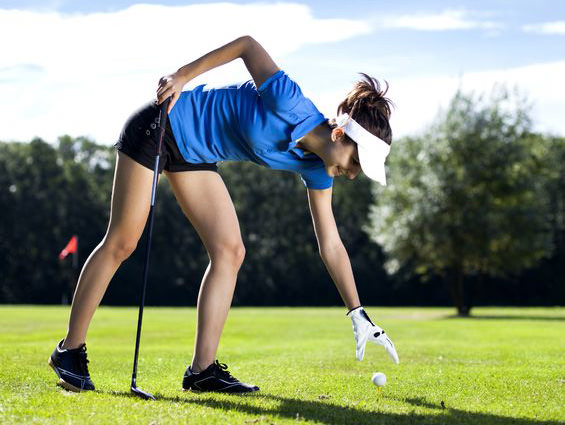
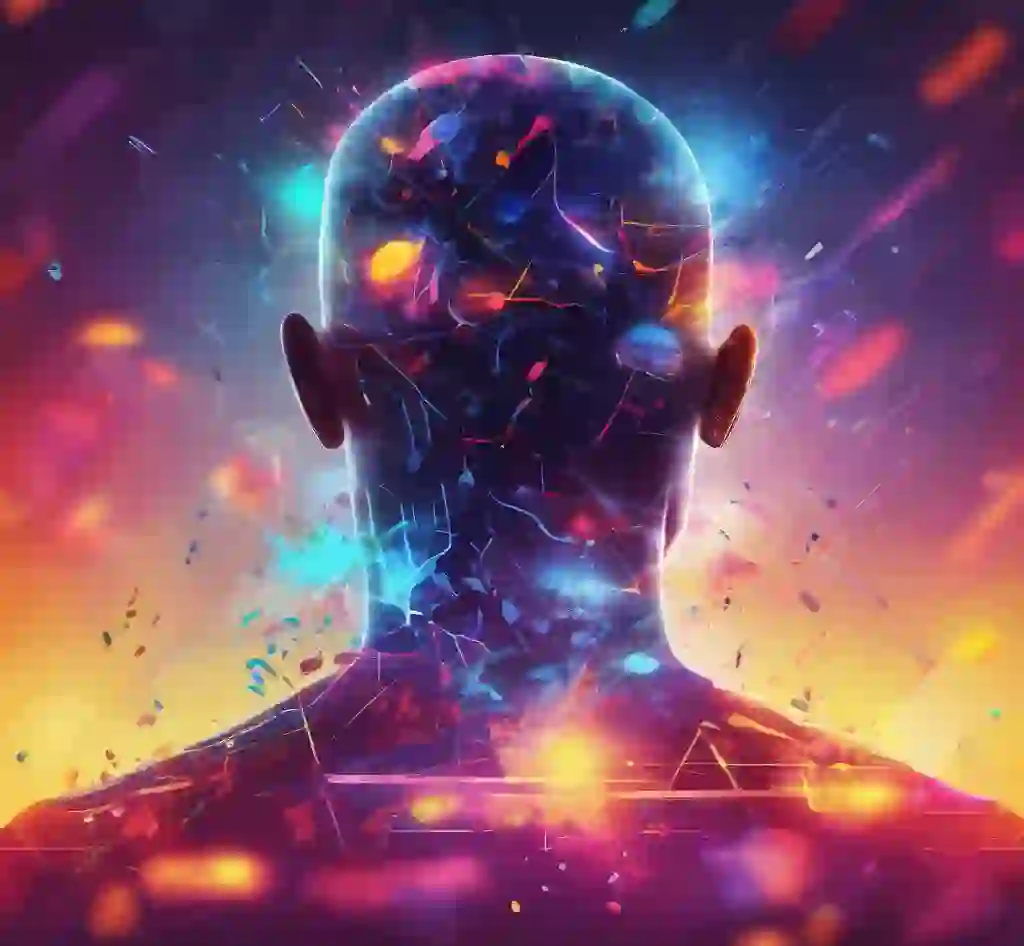
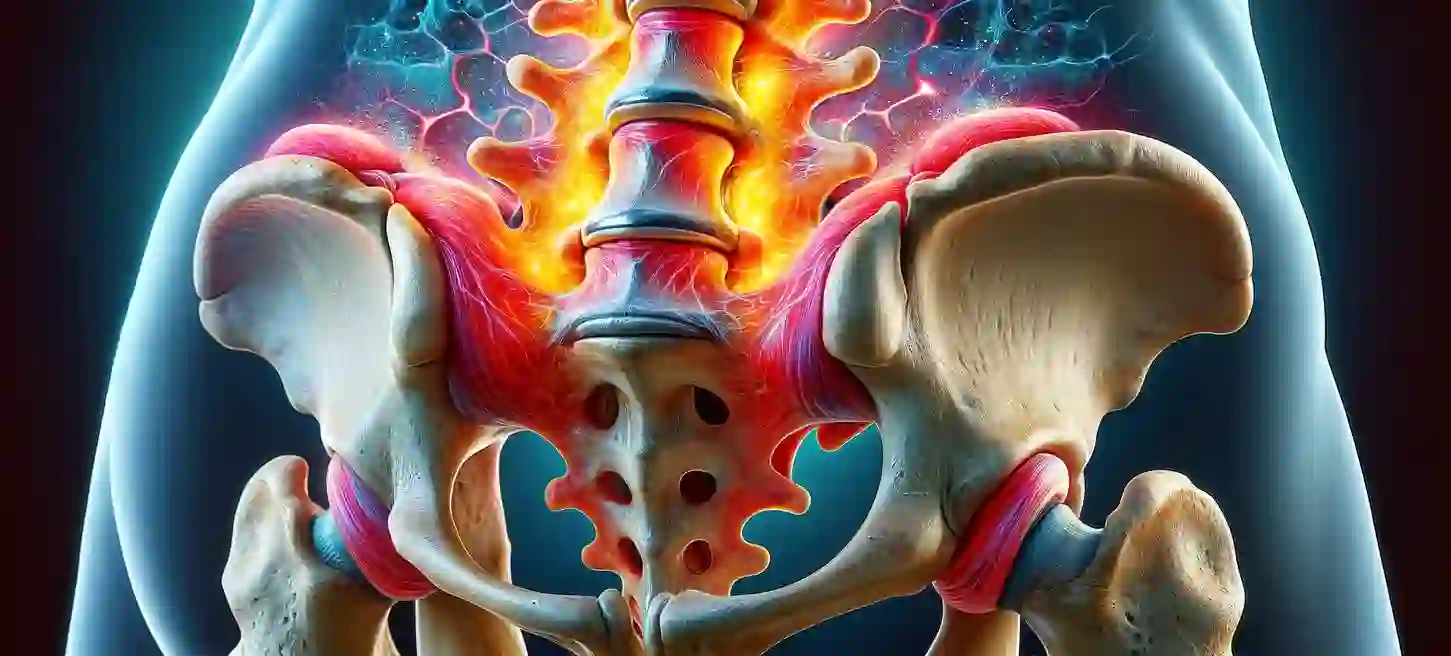
Hello Dr Ken, I have a bulging disc at C5/C6 and C6/C7 and I was just wondering if it is possible for the disc to retreat back to its original shape through traction and exercises. If yes, which type of exercises would you recommend? I do not have any pain or tingling or numbness but there is a slight lump on the left side of my neck which is quite annoying. I also get vertigo and slight pain on my neck where the lump is. I would really appreciate your feedback. Thank you.
Author
Thanks for your question Muzzammil. The bump can be many things like a hard muscles, misplaced vertebrae, or many other things. I cannot help you as I would need to examine you to determine if the problem is even in my scope of practice or you need to be referred. I recommend that you go see your medical doctor about this.
Hope that helps your herniated disc.
HI Dr,
I was diagnosed with a L2 L3 disc extrusion, Can you recommend some exercises to help??
Thank you
Author
Thanks for your question Lenny. It’s quite possible that your diagnosis is correct but it’s also possible that other things are causing your lower back pain or leg pain. If the problem is related to your disc extrusion you can do the first two exercises in this article. You don’t say what symptoms you have so it’s impossible to tell as there is nothing to correlate your diagnosis with your symptoms. If the problem is not an extrusion or a severe extrusion that is symptomatic then you could get worse with even those two exercises.
The above is an opinion and not a recommendation.
Hope that helps your disc extrusion. I’ll do my best to try and give you a good answer. Your Toronto downtown chiropractor.
Hello doc, I am doing cobra exercise for two weeks for about 7 to 8 times per day the pain in my lower back in l4l5 region deminishing, i mean pain is geting less but the pain in my buttock still the same. I cannot sit for a long time, every time i sit i can feel the pain in my buttock!like pin and neddles, i can only tolerate the pain about 30 minutes to one hour for sitting! I am trying to avoid sitting if i can! When i sit i try to stand up every 5 or 10 minutes! This pain in my buttock started last june due to prolong sitting in the plane and by august it was gone for 10 days and it comeback again until now i am suffeting for this! Only i have is pain in buttock when i sit ang pain in my lower back when I touch my back! I sleep on my side always because pain in my back getting worst if i sleep in my back! The pain in my buttock getting less when i make hot compress but after one day or less it comeback again! I am diagnose one year ago large hernieted disc at l4l5 with nerve root compression! Now i am doing only self treatment because i am at work focusing on cobra exercise and back strengthtining! I cannot go for PT or chiropractor! After 1 month i will go home thats the time i will consult for PT and chiropractor. What would you suggest for me doc to help healing my herniated disc and to remove this buttock pain?buttock pain ranges 2-4 out of 10. In your idea doc this buttock pain will be gone with out surgery? Looks like I cannot feel pain in my lower back at l4l5 when i stand,walk and when i sleep in my side. When I sneeze or cough i cannot feel also pain in my back which I experience that before. I can only feel the pain in my back when I tight my stomach and my back but it is less compare before. Any insight, suggestion to help my condition doc? Thank you.
Question, do you have experience doc to have patient same in my condition with the herniated disc at l4l5 and they have pain in the buttocks especially when they sit and it was gone? Sometimes it is really painful from my lower back down to my buttock especially if you have lack of sleep! I am also doing some stretching for buttock pain, self-massage and apply hot compress, it only minimizing the pain after i am doing that, but i cannot see any difference for a long time. The pain still their after a couple of hours or days. As I understand that this is from a pinch nerve in the l4l5 region. In my back it is not really painful, i can feel that the herniation of my disc is slowly healing the only problem is the pinch nerve that makes my buttock pain which I dont have this before! I have no problem for sitting before even I have lower back pain.
Question, do you have experience doc to have patient same in my condition with herniated disc at l4l5 and they have pain in the buttocks especially when they sit and it was gone? Sometimes it is really painful from my lower back down to my buttock especially if you have lack of sleep! I am also doing some streching for buttock pain, self massage and apply hot compress, it only minimizing the pain after i am doing that, but i cannot see any difference for a long time. The pain still their after a couple of hours or days. As I understand that this is from a pinch nerve in the l4l5 region. In my back it is not really painful, i can feel that the herniation of my disc is slowly healing the only problem is the pinch nerve that makes my buttock pain which I dont have this before! I have no problem for sitting before even I have lower back pain.
Author
Thanks for your question Gerald. I would try the next progression which is to breath out at the end of the Cobra exercise.This will put more pressure on the disc and thus help push it in further. Try that for a week and let me know what’s going on.
If you have any other questions just I would be more than happy to help.
Hope that helps your herniated disc. That above is an opinion and not a recommendation.
You mean doc I will hold my breath and tight my back and stomach and after few seconds I will release?
Author
Gerald, no, what I mean is that you breathe out while you go into extension and loosen your core so that your pelvis is touching or at least closer to the floor. You can hold that position for 1-2 seconds. So don’t hold your breath.
That should help your herniated disc more.
Thank you doc ken, I am already doing that exercise breath out during extention and I feel really good by pushing the disc in! But now I feel to much pain in my back! I believe this is not from the exercise, It happen occationally, especially when i am tired of prolong standing or doing something in my duty like paper works, computer job but i try to stand while working in the computer and walk every 10 to 15 minutes. And i believe it helps a lot but if I dont have enough rest because i am at my work, having duty for 4hrs in morning, 4 hrs in evening! 4 hours of standing doc is to long also for my condition even I am walking? I think I need to stop for a while until the pain is less and continue again! When walking doc it also add some pain in my back and sometimes I try to walk in my foot just to minimize the pain! I am afraid if something wrong inside compared before.
Author
Gerald, it means you are getting better if you have LBP but not in the buttock. The nerve is less pinched and the disc is sticking out less. You are centralizing. Keep going with the exercises and don’t stand for too long.
Hope that helps your herniated disc. The above is an opinion and not a recommendation.
Hello doc ken again, Doc I am improving only in my lower back pain by doing cobra exercise but I still have buttock pain! I feel that my back pain almost gone. When I hold my breath and tight my stomach and my back I cannot feel pain in my back that I have that before. It means that the herniation ang inflamation in my l4l5 region is healing. But the problem is I still have buttock pain! It looks like still the same pain doc, More pain ofcourse if I am sitting, and after my work due to prolong standing I can feel that my buttock pain is increasing! If their is oppurtunity I lie down for few minutes. If I don’t have this buttock pain doc I am almost in good shape because my back already healed! I am thinking also that my buttock pain will be gone if my disc will shrimp in the long run since it is already healing, and it will give space to the nerve. What combination of exercises doc should I focus together with cobra exercise to help my buttock pain gone? Now i am doing cobra, stand extention, curl ups ang knee to chest. I am afraid of other exercise that will make my disc worst. Thank you doc for your help for my condition. God bless you
Author
Thanks for your question Gerald. When you tighten your core you don’t have pain. This means you need to strengthen your core muscles. You should do the exercises here and in this article. https://www.bodiempowerment.com/part-2-degenerative-disc-disease-exercises-help-lower-back-pain-spondylosis/
Hope that helps your herniated disc.
Doc what do we mean for this, a large broad base postero central and right postero lateral extruded disc herniation at L4-5 level is noted with moderate compression of the thecal sac and posterior displacement? That was in my MRI doc, If i understand correctly that is a spinal stenosis? Because before I dont have any problem for walking, but now I can feel that the pain in my back and buttock increasing when I walk, I can feel that the pain in my back ranges less than 0.5 out of 10 but it looks like it is increasing when I walk sometimes.. I feel i am almost confortable with my back and my buttock pain reducing, but after a few days it comeback again, the pain increasing even I am doing the correct posture and exercises.. As what you have said in dis article that spinal stenosis treatment is only surgery!Maybe this i the reason of the pain that i have.
Author
Thanks for your question Gerald. You have to get things straight. Your MRI indicates your problem is really a disc herniation. The disc is sticking out so much it is pushing on the spinal cord causing a secondary stenosis. See the treatments for primary stenosis and disc herniation causing secondary stenosis is completely different most of the time. However, there are some types of disc herniation that require a treatment that is similar to a stenosis treatment.
How old are you Gerald? With an extrusion, you always need professional help not just exercises. Hope that helps your herniated disc.
Thank you doc ken,
I am 33 years old doc, I was checked before by neuro surgeon and he advice me to try physical theraphy, if the pain will gone he said I dont need surgery, during my PT the pain was gone, after a couple of months I can feel I am not comfortable sometimes with my back after sitting! It is not a pain doc but it looks like u are not comfortable after you sit, I ignore it because I know that i have disc herniation before. When I come back to work after long flights 13 hours in a plane. I stand from time to time during the flight because i know sitting for long time is not good for me. After that long flights i am not really comfortable with my back, I am not comfortable for sitting and my back pain coming back and have buttock pain! Now doc my back pain almost gone from disc herniation! I dont have back pain when standing and walking! Now i can feel only pain on left side of my back close to l4l5 region going down to my buttock! Ranges 1/10 and I still have buttock pain range 1/10 when standing but it is increasing for sitting for long time! I can feel that the pain is slowly decreasing compare before. In your idea doc this range of pain will gone for a long time? In my buttock it is pins and needles, but I can tolerate it! Sometimes I cannot feel any pain in my buttock when I lay down. Before i am thingking of surgery for the level of pain, but now for this range of pain I dont think I need surgery for this doc. But the question bothers my mind how long this will be gone?
Author
Thanks for your question Gerald. Back pain does come back from time to time, that’s the nature of lower back pain. You need to have great posture and do your exercises here in this article. By stopping aggravation of your pain you can get better, faster with the exercises and with the help of your PT or your chiropractor. That’s just my opinion. Surgery is usually only considered after conservative therapy has failed. Doesn’t sound like you are a surgical candidate.
Hope that helps your disc herniation. If you have any more questions for this downtown chiropractor I will do my best to help you.
Dear Dr
If I understand it correctly, the advice is to do forward bends like down dog and touch toes for stenosis, but backward bends for disc protrusion. What if my MRI report says both: re L5/s1, posterior central disc annulus fusion. Disc desiccation and broad based posterior disc protrusion. Moderate left foraminal stenosis and impingement of exiting L5 nerve root in the foramen.
I have tingling and numbness in my calf and foot. The advice from my chiro is to stretch tight glute muscles, but this involves forward bending; plus, strengthen abs.
Thank you!
Dear Dr
What is your recommendation about spinal stretchers? Basically, wrapping the belt around waist and pulling low back to create space? Thank you
Author
Thanks for your question Marina. Great question. Just because it says disc and stenosis in the report do not mean both are diagnosed. You have a disc herniation with stenosis at of the nerve. The diagnosis is not stenosis. Furthermore, it depends on which way the disc is out that, determines the type of exercise. So for most people in your situation doing the exercises in this article will help.
Having said that an MRI shows an image but not how your lower back is functioning. Your body may react differently from what is expected on imaging as MRI don’t test movements and how the discs hold up under pressure like sitting and standing. MRIs for this problem is useful but secondary to history and a proper functional exam.
Hope that helps your disc herniation, not stenosis.
Good day Dr Ken,
I have 2 questions:
First is that a few months back my pelvic bone had rotated and after getting it adjusted from the chiropractor, i felt difference and relief. But now mu lower back has become very weak. I feel like my lower back and glutes are not like a single unit. Also i feel the weakness and the lower back gets stiff/sore very frequently and easily. The chiro says that it will take time to heal as the rotated pelvic bone was a chronic condition and remained rotated for 2 or 2.5 months. Is this the reason for weakness and if yes what can i do to do away it??
Secondly, i had an MRI that says :
Mild diffuse disc bulge noted at L4-L5 level with mininal indentation over adjoining bilateral descending nerve roots.
Is this a cause of concern? If so what will be the symptoms of it? I had showed it to the chiropractor and he said that this is not a concern as there is enough gap for the nerves.
Await yor reply. Thanks in advance.
Author
Thanks for your question Kaneel. An MRI does not show what is actually happening in real life as you don’t sit up or stand in an MRI. Unless you had one in that position which would be rare. I haven’t come across it yet. So that assertion that there is enough space between the nerve and the disc is not correct. While sitting there is more pressure on the disc so the disc will stick out more depending on the posture. You slouch and the disc will usually stick out more, however, if you sit with a proper arch in your lower back the disc can go back in more. Since most people eventually slouch the disc tends to stick out and eventually pinch on the nerve. Likely the problem has to do with the disc as that will cause weakness and “gluteal amnesia” or improper firing of the muscles. However, I haven’t examined you. The above is an opinion and not a recommendation.
Hope that helps your herniated disc.
So what should be my next step then according to you to get myself treated.
Should i consult an ortho or PT or another chiro?
Author
Thanks for your question Kaneel. Try concentrating on these exercises in this article with special emphasis on the cobra-like exercise. Remember you have to relax the pelvis and let the pelvis or hip touch the floor or as close to the floor as possible to see if you are improving. Try that for a week first then go see another chiropractor if you need to.
Hope that helps your herniated disc.
Hello Doctor
I’m from India and I’ve recently been diagnosed with a slight L5-SI Disc Bulge . I’m slim with a decent athletic build (5’10”,150 lbs) and as a sports and fitness enthusiast, I love playing football and have played at a semi-pro/ recreational level for the past 15 years. I also love jogging and have jogged at a frequency of 3-4 times a wee (30 minutes every alternate day)up until the diagnosis . I think I can now identify the precise moment when I caused this injury. That was more than five years ago when a sudden twisting movement during a game of football caused a tremendous muscle spasm, but up until now, I’ve never had any sort of problem with my back (although the muscle spasm used to come and ago and it was too insignificant hence I kept ignoring it) . 4-5 weeks back, I suddenly felt shooting pain from my lower back all the way down to my hamstrings. Had an X-ray, which indicated no spinal abnormalities whatsoever. I decided to visit an orthopaedic surgeon and get an MRI report of my Lumbar Spine. The diagnosis is as follows:
> Central and left para central L5-S1 disc bulge with mild left side neural foramen narrowing
> Impingement of left SI nerve root is seen
> L5-S1 disc desiccation
No Spondylolisthesis , No bulge/herniation in the remaining discs , no abnormalities in the sacroiliac joints.
The orthopaedic surgeon said that mine is a slight bulge that should go away with PT and exercises. I took a second opinion from a neurosurgeon who echoed my first doctor’s sentiments. He only asked me not to bend forward and imposed restrictions on heavy-weightlifting as of now. Taking of my pain, I can sit for hours ( obviously I don’t do that cause I get up every 10-15 mins or so and start walking since I have a desk job) ,stand for a long time and sleep without any problems/ pain. The only problem that I still have is a slight nerve irritation when I walk (as I believe it presses against the nerve roots) . The irritation or discomfort comes and goes away and immediately ceases when I stop walking /causative activity. I’ve already had 10 days of traction and electric stimulation treatment and I’m a lot better now. I’ve been advised by my physiotherapist to slowly start these extension exercises you’ve mentioned above and explained the logic behind it. I can do the advanced cobra stretch as well but it irritates the nerve for 30 minutes or so and subsides after a while. Hence I’ve decided to do the sphinx stretch and slowly progress to the cobra/ advanced one.
Now that I have summarized my medical history, I have a few key questions :
1> Are these exercises therapeutic ones /healing exercises? If so, then when can I see expect to see the positive results of these stretches, if I diligently do these everyday? I know its a long process but still an approximate time frame would be good
2> The most important question: Can I go back to playing contact sports( on a recreational level of course since I’m not a professional).? Playing is my hobby and I really want to keep fit. Doctor said I can with a proper rehabilitation program and that I should take it slowly. He also opined that I can start jogging in 2-3 months time but for playing football, a bit more time with strengthening exercises is required. SInce it’s a small bulge, and I have no significant pain except the nerve irritation on my back and buttocks, when can I expect to return to mild, recreational sports? Do I need a chiropractor or a sports rehabilitation program or will these exercises suffice?
Thanks and Warm Regards
Abhirup
Author
Thanks for your question Abhirup.
1. These are therapeutic/healing for the disc and others are for stability/strengthening exercises.
2. You can go back to light running and eventually light sports when you have pain-free range of motion in your spine that is full. Then you start a gradual program of increased exercises. I would do light squats deadlifts or bent over rows or not at all. Lunges are much safer or if you want to do weights weighted lunges.
Hope that helps.
Hello Doctor
It delights me to inform you that after doing the cobra exercise diligently everyday (3-4 times) over the last two months, I’m more or less pain-free. I’m inclined to believe that the herniation has been pushed back and it’s more or less healed. Since I have a desk job, I get up every 10-15 minutes and start walking and during those long 7-8 hours at office, I do the Mckenzie standing back extension every 2 hours or so. My pain is gone but sometimes when I sit at a stretch for more than 20 minutes, the nerve gets irritated and I have these slight bouts of discomfort in my butt. Now, I want to return to contact sports slowly but I know the spine needs to get stablilized first. I’ve started the bird-dog exercise ,as you’ve recommended above and the basic plank (which I can hold for more than a minute now) . Do you recommend any other stablilization exercises apart from planks, the bird-dog and the bridge (cause I find these comfortable to do)? How long should I continue with the stablilization exercises before I can start jogging and eventually returning to contact sports? Please note that I can make jogging movements without irritating the nerve cause the pain is not there anymore.
[P.S: I have a tight hamstring despite the fact that my pain is gone. Do you recommend the towel -stretch while lying on my back? ]
Warm Regards
Abhirup
Author
Thanks for your question Abhirup. I would try these exercises. https://www.bodiempowerment.com/part-2-degenerative-disc-disease-exercises-help-lower-back-pain-spondylosis/
and https://www.bodiempowerment.com/sciatica-4-best-exercises/
The above is not a recommendation, they are opinions. If you have any more questions just let me know and I do my best to give you a good answer.
Hello, I have large disc herniation L1 L2 with pain in my back and anterior thigh region about a three month. I start manual therapy and get worse. I’ve got twice steroids injections,pain not improved, and recently i start another physical therapy by stretching bed and acupuncture, till now without any effect.
Are these exercises suitable for me?
Thanks
Author
Thanks for your question Aharon. You ask a loaded question. You get worse with manual therapy and no change with injections, acupuncture etc.. It really depends on your diagnosis. Your symptoms seem to correlate to your MRI so likely the diagnosis is correct. However, regardless of what is seen on MRI a disc can behave differently from what is seen. A disc can be protruding out the back but behave as it’s coming out the side. In that case, you will not get better or get worse. Which is likely what happened. Your chiropractor has to test you functionally. If they didn’t do that they can’t get you better when a disc doesn’t behave typically.
So the answer is, the exercises will not likely help. You can only know though if you try it and see. Likely you will get worse temporarily for a few hours or a few days. However, that is not guaranteed. I have never ever seen anyone get harmed permanently with exercises but it is possible. Don’t try them without supervision.
You will likely need your exercises customized to suit your particular situation. Functional testing is required to know how to customize the exercise.
Hope that helps your herniated disc. If you have any more questions this downtown chiropractor, Toronto will do his best to give you the good answer.
Hi Dr Ken,
I have bulging disc l5 and sciatica to the right leg. Which got worse when bending forward or slouching. I been to chiropractor, multiple adjustments to my l5 and tail bone. The cause is my tail bone is too inward they said.
Cobra exercise helps me a lot. I have this for 3 years now from cycling and bad posture.
I’m male 33 years old.
I notice when carrying something while walking or standing the pain in the right leg got worse. Even though the stuff I carry only weigh 1 kilo, it’s more painful to the right leg when it’s heavier. I understand this is caused by the bulging disc being pushed out more with the weight carrying while standing.
My question is what kind of training should I train to increase my weight carrying tolerance while standing or walking?
Thank you
Regards
Author
Thanks for your question Ras. You should do these exercises here in this article as well as this article.https://www.bodiempowerment.com/part-2-degenerative-disc-disease-exercises-help-lower-back-pain-spondylosis/
Many of the exercises will be the same. Just do the ones that are different in the two articles.
Hope that helps your disc herniation.The above is an opinion and not a recommendation.
Thank you for your reply.
My pt also recommend bridge and plank exercise to me before. But when I tried those exercise, the pain in my right leg increase for days. Any glute activation exercise will increase the pain in the leg temporarily, even though I’m not slouching. Should I keep pushing through with the exercise progressively and see how it goes?
Because I have foot drop pain, but slowly improving.
My chiropractor doesn’t think I need surgery. And after many times adjustment he said my low back is getting better because the information in the l5 is reduced.
Author
Ras, first you should not push through the pain when doing the exercises. You should ask your PT as he/she has examined you whereas I have not. I’m going by very limited information.
Hope that helps your herniated disc.
Hi doc,
Just want to give input on my case. After numerous physiotherapists and chiropractors, finally I seen a physiotherapist that help me improve. The surprise here for me is the diagnosis and method of treatment. After in depth assessment, he told me that my pain is just sensitivity And leftover from the bulging disc. The pain is not a reliable indication. He seen many patients especially those that gone through surgery and didn’t improve with the pain and numbness. His method is to do harm check as a guide for real assessment of mechanical issue instead of pain for each exercise. 1 month after seeing him i started light running and deadlifts already. He said as long as the pain don’t last more than 48 hours and no mechanical stiffness or restriction of the spine then it’s a green light to keep continue and improve. I’m very surprised and sceptical at the beginning but now that I’m improving I would share my story in this forum. Btw he’s a Mackenzie diploma pt. He said it will take 3 to 6 months for the pain to deconditioned. For more info you can YouTube “taming the beast persistent pain.”
I believe there are many patients with similar case like mine that are trapped with no hope and solutions, just like the pt said. Especially when their mechanical issue is taken care of but not their neurological. I had mine for more than 3 years now, after countless manipulations, massage, adjustments and exercises by chiropractor and pt, osteopaths and myotherapy, absolutely no improvements.
Thanks to you as well Dr.Ken I don’t lose hope and keep searching.
Author
Thanks for your comment Ras.
Hi Dr. Ken,
I’ve heard from a friend who recommended me to go to pain management practitioners to deal with bulging disc, because one of her friend went to it and it helps. What’s pain management and what’s your view in regards to bulging disc and pain management practitioner? Is it better than chiropractors/ PT?
Author
Thanks for your question. Pain management is only for those that are on the last resort and they have tried everything. You are not curing anything you only cover the pain. If you have tried everything and it has not worked then this may be your answer. It is certainly not better than chiropractors or PT. It is a different form of treatment that is a good band-aid. I would not call that better.
Hope that helps.
Hi Dr. Ken,
What’s your view on Mackenzie exercise of side slide, which while standing someone lean on their left side of their body to a wall if they have sciatica on right leg/side and both legs a few steps from the wall then from torso drop to the wall 10 repetitions. Usually prescribed for bulging disc low back and crooked side. It’s quite recommended by pt.
Author
Ras. I am a McKenzie certified practitioner with many other certifications in addition to my doctor of chiropractic. You don’t pick an exercise out of the air because you think it will help. That exercise is only chosen in certain limited circumstances. They will most likely make you worse as the vast majority of herniated discs don’t go out that way. There is a remote chance it will make you better but it will take an examination to determine that. You can go see a McKenzie certified practitioner. Most PTs are NOT certified. They might have taken a course but that doesn’t qualify them to do McKenzie technique. If you see a person that claims to do McKenzie technique, make sure they are certified. I personally know numerous physiotherapists that claim they do McKenzie technique having taken one or two of their seminars. They are not certified meaning they aren’t any good at the technique. They haven’t passed the theory or practical exam. They can claim to do a technique without having passed the most basic level of proficiency.
Hope that helps your possible herniated disc.
Hi Dr. Ken,
Why majority PT I seen always emphasizing in improving mobility than eliminating the pinching nerve symptoms on the leg. Thus teaching exercise such as knee to chest strech, twisting exercise, and glute strech.. the cobra is last on the list. And these are physiotherapists with more than 20 years experience plus lecturer at the University in Australia.. What’s your view on that?
Author
Ras, it all depends on the lens through which you see the world. McKenzie practitioners emphasize the pinching of the nerve, while others do rehab only. I personally have the opinion is one is not better than the other and both need to be done. Both are proven in research. I think you see too many different people and are being pulled in different directions. You should stick with one or two people and see if they help you. If they help stick with them. If they don’t after a month you should move on to a different health practitioner. I think you are wasting both time and money by shopping around so much.
Hi Dr Ken,
Thx for your reply. I’m just confused why the pt view so opposite of the chiropractors in this regard. From your view slouching and twisting are bad for bulging disc, but the pt encourage to slouch and even keep doing knee to chest or child pose stretches to increase the slouching even more further. And saying that chiropractic adjustments are useless.
I’m just surprised by how opposite this view were taught to the patients.
Even your page taught how to pick up stuff from the floor the correct way, by NOT slouching. And yet this University lecturer pt have different view.
I’m writing to you because your exercises above are the ones that improve my sciatica. So your opinion means a lot.
Author
Ras, you are not understanding. I have a page dedicated to flexion exercises. It’s not chiropractors or physiotherapists. Any decent manual therapist customizes the exercises for the patient. Others will give you the same exercises to everybody. So it’s your experience but that is not how chiropractors and physiotherapists behave. I know because I deal with many physiotherapists and chiropractors alike. Certain patients require flexion, others require extension exercises while, other patients require combination exercises that are customized. So you say even my page, well that’s wrong as you clearly haven’t read my entire site.
So the views in general, aren’t opposite they depend on the patient, not the health professional.
Dear Dr Nakamura,
Thank you for your excellent articles and advice, it has been very helpful for me during my research. I have a herniated disc at L5/S1 (compressing the S1 nerve) for over four months.
For the first three months it went undiagnosed and I received PT and acupuncture treatment for piriformis syndrome as all of my pain has been been in the glute and leg. My pain is still focused in the glute and leg with numbness and pins and needles in my foot. I often get a stabbing/shooting pain in my glute when going from sitting to standing position. I have noticed my affected leg losing muscle and have weakness standing on toes. This injury has greatly affected my sleep as I am waking frequently at night from pain – only finding relief with walking. I have been following all my PT exercises and yours but have seemed to have no improvement for the last 2 months. I recently received a CT guided cortisone injection into the nerve which only provided relief for the first 3 days.
I have now been referred to an orthopaedic surgeon. Surgery would not be scheduled for at least another 2 months – placing me at the 6 month mark. What is your opinion on surgery at that point or do you think I should continue with conservative treatment for longer?
Kind regards
Author
Thanks for your question Zoe. After the cortisone injection, I would revisit doing McKenzie extensions again to see if they will help. Often times the anti-inflammatory changes very stubborn problems so that only the mechanical portion is left thus exercises that were not helpful begin to work.
I would certainly do that before surgery.
Hope that helps your disc herniation. The above is an opinion and not a recommendation.
Hi Dr. Ken, When should one start the stabilization exercises? Does one have to wait until the pain goes away??
Author
Thanks for your question Avi. You have already started with some stabilisation exercises as this is part of the exercises in this article. So you are reducing the herniation and you are stabilising your spine already. That’s the beauty of it.
Hope that helps your disc herniation. If you have any more questions for this downtown Toronto chiropractor I would be more than happy to do my best to give you a helpful opinion.
Hello doc ken.TY for your reply… I have large herniated disc l4-l5 with medium nerve root compression! Two spine doctors told me that I need surgery before when they see my MRI. I go for another 3rd opinion and the spine doctor told me that he will not go first for surgery and he suggest me for PT. He also told me that MRI is not important, the important is my condition. He check me physically. During that time i only have pain in my back range 1-3, no leg pain, no numbness in buttock, leg and feet. This is already 10 months from me. I improve during my PT and the pain was gone and sometimes it comeback maybe because sometimes I forgot for wrong posture/position and for riding in a car. Now i have back pain again and i cannot sit for a long time! That is the only problem that i have. No bowel and bladder problem. When i sit I can feel increase of pain in my back and to my buttock. I dont know doc if this is from disc being pressure during sitting or disc pinching the nerve when I sit! My back pain now range 1 -3, occasionally more than that. I am afraid that it will not gone because of this and is not clear for me if surgery is necessary for this! I am trying to avoid surgery if I can be heal for PT and exercise because if i will go for surgery this will be the end for my work. Do you think i am a cadidate for surgery base on my condition doc? Presently i continue exercise as what you advice. Ty doc and more power.
Author
Thanks for your question Gerald. I would try a chiropractor or another physiotherapist. I personally would not do surgery for simple back pain with no complications whatsoever, even if the pain was worse than a 3/10. Why would you consider surgery, if you got better with physiotherapy? Also, there are other physiotherapists and chiropractors that you have not tried yet. Get out there and get better Gerald.
Hope that helps your herniated disc. If you have any more questions for this downtown Toronto chiropractor I will do my best to give you a great answer.
Thank you so much again doc, I am very happy that I reach you for this site and received free answer from you regarding some questions and doubts in my condition. Sometimes I dont know what to do, i cannot judge or decide what to do, and I lost hope sometimes especially when the pain increases. God bless you doc and more blessings in life. You can help a lot of people for this.
Hello doc, just want to ask, 10 months of hearniated disc it is still possible to heal? I am pain free already after my PT but i notice when i am in the car for about 1 hr, and this happen every other day, sometimes in a week. I can feel weakness in my back, and after a few weeks or months I can feel that there is pain again in my back! After 6 month from herniated disc i can feel that i am not comfortable when sitting even i cannot feel pain in my herniated disc only on the side of my back with small pain about 1 or less. Presently i have pain again, somtimes it less, sometimes getting worst! Almost 3 months for this already and it happens 9 days only i am pain free ang it comback again.I am always doing exercise what PT before given to me! I am at work now ang i cannot come back for therapy. But i am planning to go again for therapy when I go home. That would be after 3 months if I can survive in my work. I am thingking to go home early but i have my family with two kids, I am afraid that when i go home i cannot support them financially. I am 32 yrs old. When i go home and if i am improving in therapy again i am planning to take a rest for 6 months before i will comeback to my work again. Do you think that would be a good decision doc? I am afraid also that my pain will takes long time to heal if i will not cure early. What would you advice doc?thank you for giving time reading this. And i am waiting for your reply. God bless you.
Author
Yes, Gerald, you can heal. Continue on with the exercises or rather start the exercises.
Hi Doctor,
I had disk herniation at my l5/S1 for a year and didn’t know. It was when the pain started radiating down my left leg and physiotherapy didn’t work that I did an MRI which showed that the disk was severely herniating. I ended up doing a surgery July 7th. I was re-admitted on July 17th due to csf leakage. They had to open me up to close the leakage. Then one more surgery was done on the 25th of July for dural repair. Now, since August 1st, i’v been having severe pain in my groins and my scrotum. It’s only with drugs I can bare the pain and even with that, it’s still bad. I’v done the “bird dog” and other exercises for a month now with no improvement. I currently have very negligible pain at my back and none of the sciatica pain. P. S. I was not having groin or scrotum pain before the surgery. Any ideas?
Author
Thanks for your question Dami. There is pressure on your spinal cord or more accurately the cauda equina from either inflammatory fluid or scar tissue from my point of view. You will need an MRI as a follow-up to determine for sure. The surgery was a failure. I cannot recommend exercises as I don’t know what they did in the surgery and you can really only tell with an MRI and by talking to the surgeon and looking at the surgical records.
Sorry to hear about this. Hope your herniated disc gets better.
Hi Doctor,
Thanks for the answer. The first surgery was a microdiscectomy on my l5/S1. The 2nd was spinal exploration plus dural repair. Apparently the csf leakage that was fixed wasn’t fixed well. Before the second surgery, I did a repeat MRI which showed that there was space between the nerve and the disk. But there was also a concentration of csf which led to the second surgery.
I have also checked the symptoms of the cauda equina and I don’t have any of the symptoms mentioned there.
“Symptoms of cauda equina syndrome include low back pain, numbness and/or tingling in the buttocks and lower extremities (sciatica), weakness in the legs, and incontinence of bladder and/or bowels”
The only thing I have is pain in my groin and testicular region. No incontinence, no weakness, nothing else.
Any ideas?
Author
Thanks for your question Dami. If there is no pressure on the disc and a concentration of CSF that is not a reason to do a second surgery. The real reason is the surgery caused a leakage of CSF due to your dura mater being weak or the surgeon made a mistake.
You can have pain in the groin and testicular region from pressure on the nerve going to the groin and also the cauda equina. Both happen infrequently but I have seen many cases. First of all, you need to know that the MRIs doesn’t show how you the reality of life. MRIs are taken lying down unless you got an MRI while sitting which is very rare as that is a more expensive MRI. Most people have pain with forward bending or sitting. Since there is more pressure on the disc when sitting you will get more pressure on the nerve. What appears to be no pressure can be pressure when not in an MRI. So MRIs don’t actually show what’s happening when you have pain for most people. You can get pressure on the thecal sac which is the covering of the cauda equina and cause groin pain. You can also simply get entrapment of the genitofemoral nerve near the psoas or anywhere along the path.
However, I cannot give you exercises as you have been injured by the surgery the consequences of surgery can make exercises aggravate your situation. In your case I cannot tell without an examination. Why don’t you consult with a chiropractor that can actually examine you.
Hope that helps your understanding of your lower back and disc herniations.
Hi Dr Ken,
I’ve had sciatic pain from my right buttock wrapping into hip and down to my knee. This has been going on for nearly 11 months now. It started out where I was taking 1600-2400 mg of ibuprofen a day. This went on for 6-7 months. I weighed 194 and dropped down to 170. During this time I started seeing a chiropractor who had a PT in his office. We never did any adjustments. Just massages that focused on the piriformis. This seemed to lessen the pain for about 2 days where I could avoid ibuprofen. After 2 days it would be 800mg if ibuprofen a day. My chiropractor finally ordered an MRI and requested dye as well because of my concern of a possible tumor since I have had ovarian cancer. The results showed a herniated disc at my L3 and my L5S1 (L5S1 was pushing or pinching the nerve) as well as a small schwannoma tumor in the cauda equina region of the lower lumbar. The chiropractor recommended that I see a neurosurgeon that he wanted to refer. It almost seemed that he was pushing the neurosurgeon down my throat as my oncologist had referred a different neurosurgeon and the chiropractor continued to push his own referral. It was a bit unsettling but I agreed to see his referral. Prior to leaving the chiropractor’s office that day, that had me do one session of stretches with the physiotherapist. After the one session I started walking 30 min a day at the gym and doing the squats from a chair. As the week went on the pain lessened in my leg. It went down to a 1 for the most part and pain would rise to a 2 half of the time when I stood up. I was pretty excited of the progress over the last week. I went to the chiropractor today expecting to meet with the physiotherapist so she could work with me even more on posture during the stretches. However I ended up meeting with the chiropractor and the physiotherapist wasn’t there. The first thing he asked was “did I see the neurosurgeon today?” I said, “no they called to leave a message but I haven’t went in yet.” He proceeds to tell me he saw the neurosurgeon last night and they talked about me and the neurosurgeon said I was on his calendar for today. He said him and the neurosurgeon both agreed that doing a disectomy on the 2 herniated disc would likely be the route they went and observe the schwannoma. I explained that over the past 11 months my pain has went from a screeching 10 making me scream and take 2400 mg of ibuprofen to a 1-2 with no anti inflammatories now. I explained my insurance deductible starts over in January, so I would like to continue physiotherapy and lose another 15-20 lbs to see if I can become pain free. ( I do not have weakness of the legs, drop foot, bladder or bowel issues. I only have the sciatic pain in my right buttock and leg from the buttock to the knee). I also explained after having ovarian cancer I wasn’t comfortable with just watching and waiting to see what the tumor does. I explained that I understand the location of the tumor is no good whether we operate or it slowly grows. I told him I have done research and read about cyberknife that is non invasive and it kills the tumor so it can’t grow. I explained that looking into the tumor with this non invasive procedure would be important to me at this point and asked if his referral did this procedure. He said he wasn’t familiar with the procedure and the neurosurgeon he was referring me to does a lot of disectomies. That him and the neurosurgeon already discussed and he knows they will want to just observe via MRI. He then continued to push the consultation with the neurosurgeon for the disectomy and told me that disc don’t just absorb themselves. He said with it touching the nerve it will need surgery and stretches and losing weight won’t fix it. I finally agreed to the consultation so we could quit talking about it. At this point I felt I needed a second opinion because everything I read says dont do surgery unless it’s an emergency and you go numb or lose bladder or bowel function. (Maybe if he wasn’t so pushy with his referral I wouldn’t feel this way. I’m not sure). He then had me get on his traction table and he pushed around on my spine while the table kept dropping my legs and lifting them. (He has never had me do this before. Just stretches and massages). He finished and the pain had gone from the glimpse of hope I had at a 1 sometimes 2 back to a 5.5 and after laying still all night a consistent 4. I almost feel that he pressed around on the disc because i told him it was feeling much better and wanted to hold on surgery. (Maybe I’m making this up in my head but that’s how I felt). I went from feeling like I had hope between the disc healing and finding the non invasive cyberknife procedure to hopeless since my visit with the chiropractor today. In addition I feel that trust and credibility went out the window today. I’m wondering if what he said was all accurate and I just wanted to hear that it can possibly heal the rest of the way, and now I’m making up that he has Ill intentions because it wasn’t what I wanted to hear.
Can you please provide feedback as to my concerns and his advice?
Author
Thanks for your question Amy. First, you don’t do surgery without doing extensive conservative therapy with the exceptions you pointed out like bowel and bladder issues, weakness or drop foot. I would personally go to that physiotherapist again in a different location or a different one.
The problem I have is that Neurosurgeon apparently has decided what he/she will do ie surgery without doing an exam. Red flag! If that’s true and the neurosurgeon is taking the word of the chiropractor and the MRI I would not go. As a health practitioner, you always have to do a thorough history and exam. You then have a diagnosis before looking at the MRI. None of that is happening. The second problem is the physiotherapist started getting you better with effects that weren’t just overnight. You had a durable improvement. The chiropractor should then be happy that surgery is now less likely if the effects continue. The chiropractor should acknowledge this and encourage you not the referral at this point.
Having said that I don’t think the chiropractor likely tried to hurt you as that is a known treatment that does help disc herniations. Unfortunately, it can make you worse as it doesn’t make all types of discs herniations better.
It is unusual for the chiropractor to be so pushy. That is a yellow flag to me and sounds my like sales to me. However, I wasn’t there and I am listening only to your side.
Hope that help your herniated disc. The above is an opinion and not a recommendation.
If you have any more questions from this Toronto downtown chiro I would be happy to answer them for you. That’s the best I can do for you.
Thank you so much Dr Ken. I’m extremely appreciative that you take the time to get on this forum and answer questions.
My pain is about a 4 and feels like someone punches me right in the center of my right buttock, with a light burning sensation down the back of my leg and an irritating pinching feeling at the back of my knee. What I’m starting to see is, if I’m up moving around a lot, whether it be walking around or just doing house work the pain drops to a 1 or less. I think I see greater relief when I’m squatting down and standing up a lot in a day (example we just changed baseboard in our house and there was a lot of up and down). Although my body feels exhausted the pain subsides in my butt and leg. When I walk the pain subsides to probably a 1. It’s when I’m sitting, laying down, or initially standing up after sitting that the pain is at it’s worst. (However it used to be a lot worse and I’m finally able to manage without predisone, shots of pain medicine in my butt, and ibuprofen).
With this information is there any excerises or stretches you would recommend? Also, any ideas as to why the pain lessens after these types of motions and seems worse while laying, sitting, or standing?
I also read that a girl’s chiropractor told her to bounce on a ball five minutes a day to increase the blood flow in her spine to help heal faster. Would this really help? Any other ideas to help?
Author
Thanks for your question Amy. Regarding bouncing on all ball for faster healing. I have never heard that bouncing on a ball can increase blood flow to the spine. I do know that you can sit on the ball and do other exercises to increase the stability of the spine at the same time strengthening the spine. Perhaps there is a misunderstanding on her part?
As for why you feel good when standing and squatting. Most people do this by keeping their spine extended or in other words, there is a curve in your lower back when you stand. Also, if you do a proper squat your spine is extended as well. When you sit your arch is usually straightened or even reversed thus pushing out your disc. However, if you have great posture you have an arch in your lower back when sitting.
My opinion is that the exercises in this article would suit you very well and should be helpful.
Hope that helps your herniated disc. If you have any more questions for this downtown Toronto chiropractor I would do my absolute best to give you an answer that is most useful.
Hello Dr. Ken
I have had pain in the right side of my lower back moving upwards for several weeks and much stiffness in the back. The pain somehow radiates to the hip area. Is it possible that my disc is herniated causing this pain or might it as well result from a teared muscle in my back.
Thank you. Best regards, Ása
Author
Thanks for your question Asa. Unless you had trauma or a motor vehicle accident you would not tear your muscle. It is more likely to have a herniated disc. However, it can be many, many different diagnoses as you don’t give me much information to go by.
Hope that helps your possible disc herniation. This is an opinion and not a recommendation.
Hey Dr. I’ve suffers from back pain over the past 4/5 years through competitive sport. Recently I have been in agony and suffering from a herniated disc in the L5/S1 region. Previously I have been able to carry out several exercises which had positive results in particular the cobra pose. However recently when carrying out this exercise, I feel a pinching sensation in my lower back, there is no referral down my leg but I have never had this sensation before. Is there a way of correcting this? I have looked at my technique and connot find any poor habits. Kind Regards, Stephen
Author
Thanks for your question Stephen. It sounds like your disc moved. You will have to go see a professional to help you out. Hope that helps your disc herniation.
Hi Dr Ken,
I’ve been part of page for years. I’m grateful for your help.
My question for today is, more than a week ago I lie in sphinx position and tried to do Superman exercise that I haven’t done for a while, but when I tried, I felt sharp pain on my right hamstring which is my sciatic leg, i immediately stop, since then my pain in my right leg is worse now. I don’t understand why is worse, because I’m not in slouching forward position, did I somehow push the gel out more now? By overdoing the Superman? Is it just inflammation? I’ve seen my chiro and he said time will take care of it.
My tail bone is too inward that my l4-l5 pinch my nerve for 3 years now. Cobra exercises helps me a lot. 33 yrs male. Cyclist.
Author
Thanks for your question Ras. Either your disc was sticking out too much or it went out in a new direction so you pinched the nerve more with the disc. The disc can change position usually slowly but can be a matter of hours. It’s not the exercise, it’s how you use the exercise that counts.
Hope that helps your herniated disc. If you have any more questions, for this downtown Toronto chiropractor I would be happy to give you a good answer.
Thx Dr for the reply,
I would love to visit you but I’m in the other side of the globe, Australia.
I just went to osteopath, she streching me like crazy, to add mobility and release stiffness. Stretching my hamstring, and twisting my body. This is a question I want to bring up here, the osteopaths and physiotherapists I met all told me that twisting the spine is not bad for the herniated or bulging disc. Actually it’s encouraged, to increase mobility. But I learnt from you that twisting the spine is bad for herniation.
1. Which one is right?
2. Does stretching and increasing mobility is useful for disc herniation? Because I don’t feel any improvement but sore hamstring from the osteopaths. And you’ve mention that stretching the hamstring will make the pain in the leg worse.
Thx
Author
Thanks for your question as usual Ras. Stretching the hamstrings will make things worse except if it’s flossing. Flossing when the problem is bad can also make things worse. You have to test the spine to see if you are ready for flossing. Twisting done a few times is fine. Repeated twisting will make you worse. That’s my opinion. Doesn’t sound like it’s helping either.
Thanks for your reply doc.
Why in my case, activating glute will make the right leg more painful? Even just squeezing my butt while standing straight. Is it the nerve thing?
Since the last Superman exercise hurt me, which “very beginner” exercises can you recommend aside from cobra, to strengthen?
Author
Hi, Ras. When the nerve is irritated or pinched the muscles that goes to the nerve get tight in your case. Even when you have a muscle problem tightening your muscle hurts. If you use your arms all day your muscles get painful when you move them. Either way a nerve or muscle problem they both can cause pain when you “activate” them or move the muscle. Just do the exercises in this article.
Thanks for your reply Dr.Ken.
I have a family member who told me that he had upper back pinch nerve causing numbness and tingling to the left arm. He swore to me that going to the chiropractor for adjustment every week for 3 months that made his nerve pinch got better.
Is it true that going for chiro adjustment every week more effective than daily cobra exercises? Or it’s not necessary, only done for business purpose by the chiropractor?
Regards
Author
Ras, Chiropractic adjustments are very helpful for a pinched nerve. The number of treatments and frequency depends on the condition and the stage of the diagnosis. So you are making an example of a neck problem but asking if it will be helpful in your case. The vast majority of the times chiropractic adjustments are helpful for lower back pinched nerves. I do find it often more effective than just exercises alone, although not in every case.
Hi Dr Ken, thank for your reply.
In regard to the exercises that involve activating glute which will cause more pain to the leg, even though not causing any flexion on the lower back or posture, such as bridge or just squeezing the glutes while standing. Should I push through the pain with these exercises? Will the pain in the leg reduce when my training improve?
Author
Ras, these are not the type of exercises that you should push through pain. Stop doing the exercises. More exercises is not better.
Hi Dr Ken,
I have l4 l5 pinch nerve my right leg. I’ve been to chiropractors and PT, not much improvements, only cobra helps. I’m seeing osteopaths note.
1. Is osteopaths suitable for this kind of problem?
2. I was asked to stretch my hamstring, is it true streching hamstring can help?
Author
Thanks for your question Ras. It’s not the profession that matters it’s the person, continuing education, experience and the health care practitioner’s willingness to learn. So another chiropractor or different physiotherapist or osteopath may help. Stretching the hamstrings will make you worse but flossing may help. If too acute the flossing will make you worse. https://www.bodiempowerment.com/sciatica-4-best-exercises/
Hope that helps your herniated disc. If you have any more questions for this downtown Toronto chiropractor I will do my best to give you a good answer.
Hello Dr. Ken
I’m 33 years old with 6 feet height and 95 kgs.Last year in April 2016 I had terrible shooting pain from mine back to toe.Then as suggested by my doctor I got a MRI done which reported that- 1.lumbar spondylosis with paravertebral muscle spasm. 2. Central and left paracentral L4-5 disc extrusion and caudal migration causing thecal sac indentation, left L5 lateral recess compromise with bilateral neural foraminal stenosis(L>R)..
I did physiotherapy and traction for 3 months.My physiotherapists asked me to touch toe daily,which I did. Right now I do not have any pain but there is numbness from left of calf muscle to toe. And has a power loss due to which I can’t run. Dr. plz suggest me what to do? Weather I should go for surgery?
Author
Thanks for your question Amit. In your case, I would ask your 2 or 3 different orthopaedic surgeons if you need surgery. The loss of muscle strength is concerning. However, if you are continuing to improve your strength then I would stick with the program your physiotherapist is doing. Sounds like you had improvement with your pain but was your strength measured as a baseline. Were your calf and thigh measured at the beginning? If not, you wouldn’t know if your strength is improving. As for the numbness when your strength improves the numbness will improve although that can take even more time.
Extrusion can take 6 months even longer to heal.
Hope that helps your herniated disc. If you have any more questions for this Toronto downtown chiropractor I would be happy to give you a good answer.
Dr Ken,
Last Oct 2016, I had pain in my lower back. It was something like a finger pushing into my lower spine. I consulted a doctor, took an X-Ray which indicated doubt for L5-S1 disc prolapse with lumbago. Then further a MRI was taken where the report tells L4-L5 and L5-S1 posterocentral protrusion. Took some rest and tablets and got relieved from the pain.
Recently I had pain (muscle contraction rather) on my lower back. Consulted an ayurvedic doctor, based on the advise of my friend, underwent massage treatment.
Though slightly over weight, I play soccer, badminton, weight lifting etc but due to this situation not as confident as I used to be. Kindly advice what could be the best exercise for me to strength my back so that i don’t have any repercussions.
Tiju Mathew
Author
Thanks for your question Tiju. I would simply do the exercises in this article. They are made to stabilise and strengthen. This is an opinion and not a recommendation.
Hope that helps your possible herniated disc.